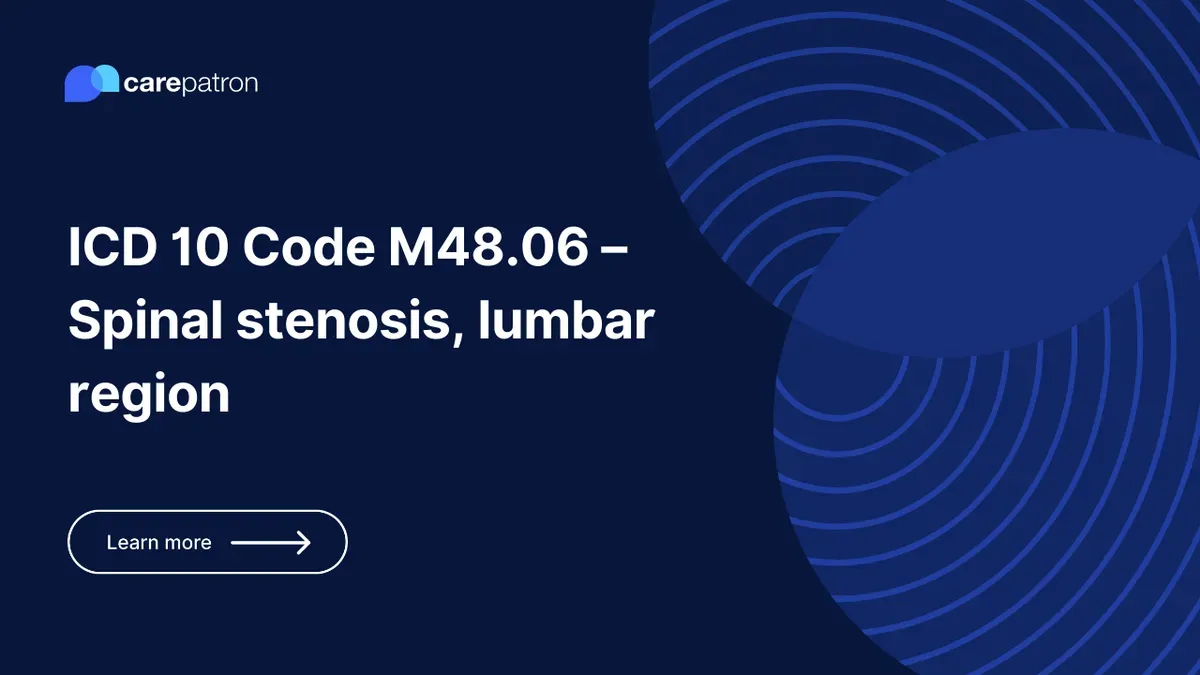
M48.06 – Spinal stenosis, lumbar region
The ICD-10-CM code M48.06 diagnoses spinal stenosis in the lumbar region of the spine. Learn what this code entails, from its clinical information, if it’s billable or not, FAQs, and even related ICD-10 codes by reading this short guide.
Use Code
Commonly asked questions
No. Please use an ICD-10 code with higher specificity for this condition, like M48.061 - Spinal stenosis, lumbar region without neurogenic claudication.
When you have a patient with spinal stenosis in their lumbar region. Make sure to conduct further tests to designate them with a more specific ICD-10 code.
Pain medication, anti-inflammation medication, and physical therapy.
EHR and practice management software
Get started for free
*No credit card required
Free
$0/usd
Unlimited clients
Telehealth
1GB of storage
Client portal text
Automated billing and online payments
